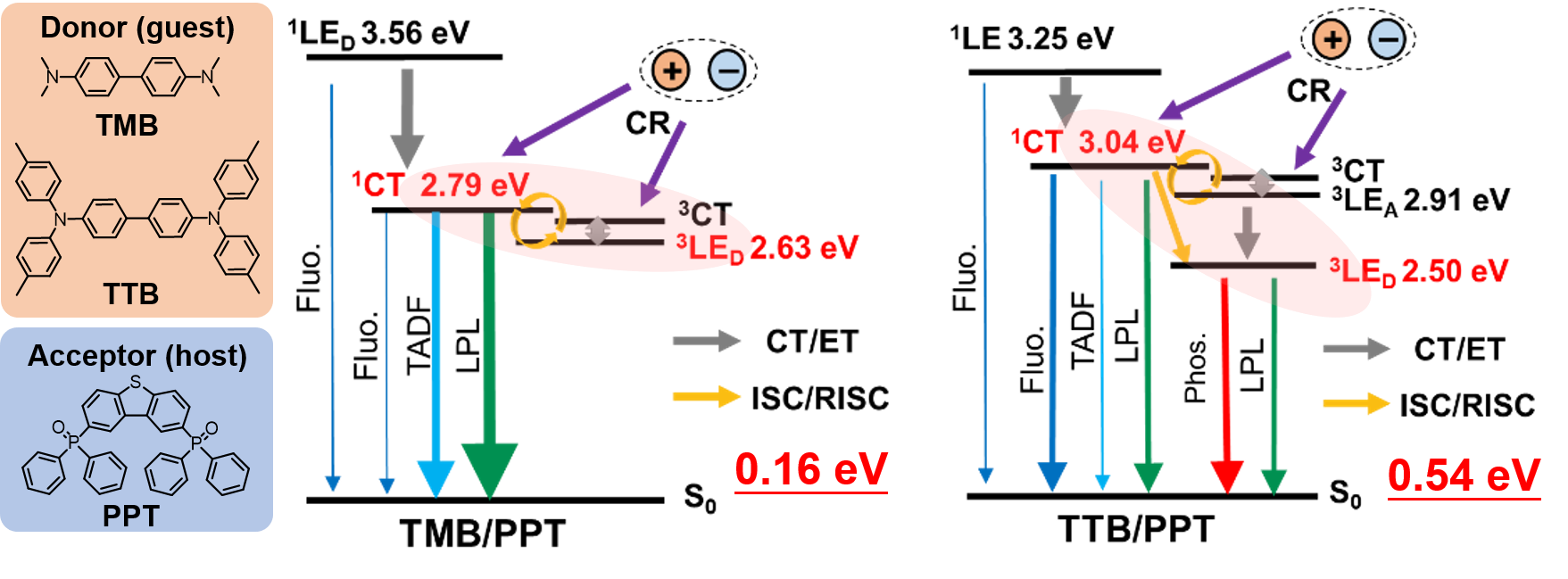FY2019 Annual Report
Organic Optoelectronics Unit
Assistant Professor Ryota Kabe
Abstract
I joined OIST on 8/1, and since Lab 4 is under construction, we worked remotely at Kyushu University and moved to OIST in mid-March. I have hired Zesen Lin, who I mentored at Kyushu University and withdrew for credit in September 2019, as a technician since October. In addition to his work as a technician, he completed his doctoral thesis and received his Ph.D. from Kyushu University in March 2020. He will become my unit PD from FY2020.
In order to continue my research at Kyushu University, I started a joint research project with Professor Adachi. I also serve as a mentor to several students, and we will continue our collaboration in FY2020.
On the research side, we have developed materials for organic long-persistent luminescence (OLPL) systems and elucidated their mechanisms, and found that the correlation of excited states of materials is important for OLPL.
1. Staff
- Zesen Lin, Technician (2019/10/01 - )
- Akiko Guzman, RUA (2019/08/01 - )
2. Collaborations
2.1 Development of organic long persistent luminescence systems
- Type of collaboration: Joint research
- Researchers:
- Professor Chihaya Adachi, Kyushu University
- Kazuya Jinnai, Kyushu University
- Naohiro Nishimura, Kyushu University
- Shinichi Tan, Kyushu University
2.2 Analysis of organic long persistent luminescence systems
- Type of collaboration: Joint research
- Researchers:
- Professor Takashi Tachikawa, Kobe University
- Manabu Sakurai, Kobe University
3. Activities and Findings
3.1 Relationship between chemical structures and emission color of OLPL
The emission color of OLPL system consisting of an electron donor material and an electron acceptor material, is controlled by the HOMO level of the donor and the LUMO level of the acceptor. Although the emission color can control by the energy transfer to the additional fluorescent dopants, all the presented two-component OLPL systems show green color. Since the overlap between the emission spectrum of the OLPL and the absorption spectrum of the fluorescent material is important for the efficient energy transfer, the emission color control of the binary OLPL system is required. By controlling the HOMO level of a similar donor materials, green and orange organic LPL emissions were realized. We confirmed the emission color corresponded to the energy difference between the donor HOMO and the acceptor LUMO.

Figure 1: Emission pathway and color of OLPL systems.
3.2 OLPL emission mechanism controlled by the relationship between locally excited states and charge transfer excited states
The OLPL emission is based on the exciplex emission between electron donor and acceptor. The exciplex is also known to exhibit thermally activated delayed fluorescence (TADF) because of a small energy gap between the singlet excited state (1CT) and triplet excited state (3CT). In this TADF process, not only the energy difference between 1CT and 3CT, but also the triplet excited state (3LE) of the donor and acceptor molecules affect the emission process. In this study, We demonstrated that the triplet excited-state of the donor (3LED) influences LPL emission by changing the energy gap of ΔE(1CT−3LED). When the energy level of 3LED is significantly lower than that of the 1CT, the OLPL efficiency was reduced. Because a large energy gap induces a higher 3LED population through ISC and energy transfer from 3CT to 3LED, the emission from both 1CT and 3LED contributed to LPL. This dual emission from both 1CT and 3LED produced white light without the use of additional dopants.

Figure 2: Emission mechanism of OLPL systems.
4. Publications
4.1 Journals
[1] Lin, Z., Kabe, R.*, Wang, K., Adachi, C.*
Influence of energy gap between charge-transfer and locally excited states on organic long persistence luminescence
Nat. Commun. 11, 191 (2020). DOI:10.1038/s41467-019-14035-y
[2] Nishimura, N., Lin, Z., Jinnai, K., Kabe, R.*, Adachi, C.*
Many exciplex systems exhibit organic long‐persistent luminescence
Adv. Funct. Mater. 30, 2000795 (2020). DOI:10.1002/adfm.202000795
[Inside front cover]
[3] Lin, Z., Kabe, R.*, Adachi, C.*
Orange organic long-persistent luminescence from an electron donor/acceptor binary system
Chem. Lett. 49, 203–206 (2020). DOI:10.1246/cl.190823
4.2 Books and other one-time publications
Nothing to report
4.3 Oral and Poster Presentations
- Kabe, R., Long-Persistent Luminescence from Organic Molecules, IDW’19, Sapporo, Japan, Nov. 27-29 (2018) [Invited]
-
Kabe, R., Long-Persistent Luminescence from Exciplex, 10th International Conference on Materials for Advanced Technologies (ICMAT 2019), Singapore, Jun. 23-28 (2019)
5. Intellectual Property Rights and Other Specific Achievements
Nothing to report
6. Meetings and Events
Nothing to report
7. Other
Nothing to report.



